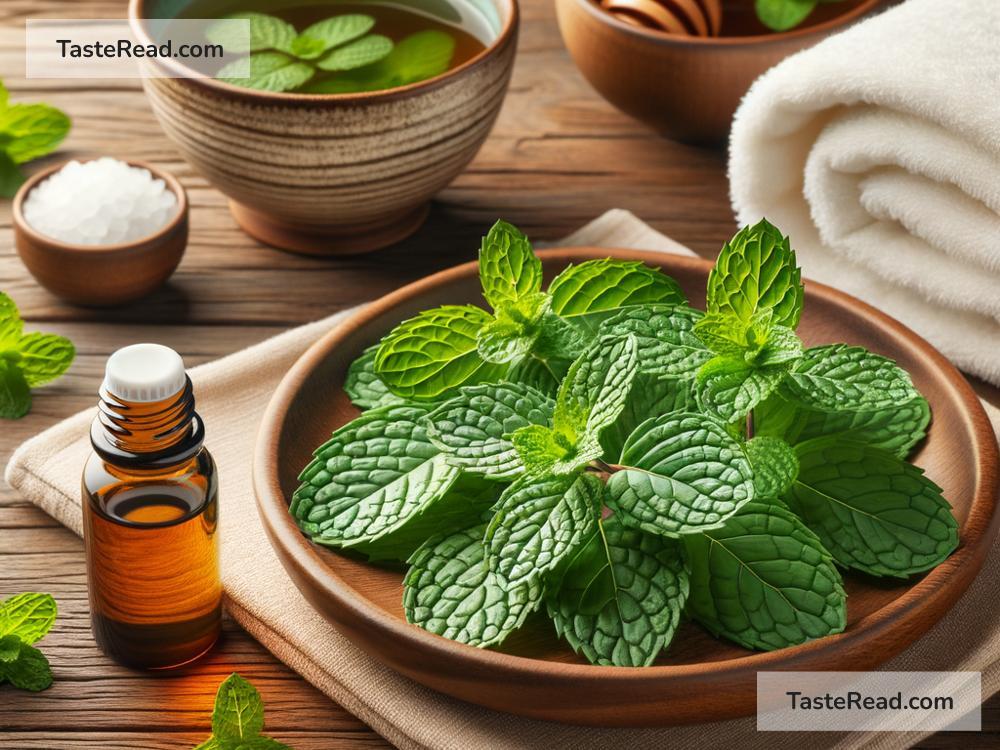Peppermint Leaves: A Natural Remedy for Muscle Spasms and Nerve Pain
Muscle spasms and nerve pain can disrupt your daily life. These conditions not only cause discomfort but also make simple activities, like walking or sleeping, feel almost impossible. While modern medicine offers various treatments, many people today are exploring natural remedies for relief. One such option is peppermint leaves, valued for their soothing properties and long history of medicinal uses.
In this blog, we’ll explore how peppermint leaves can provide relief for muscle spasms and nerve pain, and how you can incorporate them into your life.
The Power of Peppermint
Peppermint (Mentha piperita) is a fragrant herb that has been used for centuries in traditional medicine. Its leaves contain compounds such as menthol, essential oils, and flavonoids that are known for their healing properties. Peppermint is commonly used for digestive problems, headaches, and skin conditions—but it’s also gaining attention for its ability to ease muscle and nerve discomfort.
What makes peppermint special is its cooling and numbing effect on the body. When applied to the skin or taken in the form of tea, peppermint can reduce pain signals, soothe stressed muscles, and improve blood flow. This calming effect is especially useful for muscle spasms and nerve-related pain.
How Peppermint Works for Muscle Spasms
Muscle spasms happen when muscles contract suddenly and painfully without your control. This could be caused by dehydration, stress, overuse, or even medical conditions like fibromyalgia. Peppermint can provide relief in several ways:
- Relaxation: The menthol in peppermint has a calming effect on tight muscles. When applied topically or consumed, it helps loosen knots and tension, allowing muscles to relax.
- Improved Circulation: Muscle spasms can sometimes occur due to poor blood flow. Peppermint encourages healthy circulation, helping oxygen and nutrients reach affected muscles faster.
- Pain Reduction: Menthol’s cooling sensation can temporarily block pain signals, providing immediate relief from cramps or spasms.
How Peppermint Helps Nerve Pain
Nerve pain, often described as sharp, burning, or tingling, occurs when nerves are damaged or inflamed. Conditions like sciatica, neuropathy, or injuries can lead to chronic nerve pain. Peppermint may not be a cure, but it can help reduce discomfort in the following ways:
- Anti-inflammatory Properties: Peppermint’s essential oils can help reduce inflammation in the nerves, one of the main causes of nerve pain.
- Cooling Effect: Similar to how it soothes muscles, peppermint’s menthol cools the skin and provides a numbing sensation, dulling the pain signals sent by inflamed nerves.
- Stress Relief: Chronic nerve pain can lead to stress, which often worsens symptoms. The calming aroma of peppermint can help ease stress and promote relaxation.
Ways to Use Peppermint for Relief
Using peppermint for muscle spasms and nerve pain is simple and can be done in a variety of ways. Here are some effective methods:
1. Peppermint Tea
Peppermint tea is a warm, soothing drink that can relax your whole body. To make it, steep fresh or dried peppermint leaves in hot water for about 5–10 minutes. Drink it when you’re feeling tense or experiencing pain. The menthol will work from the inside to calm your muscles and nerves while boosting your overall mood.
2. Peppermint Oil Massage
Peppermint essential oil is one of the best ways to target specific areas of pain. Mix a few drops of peppermint oil with a carrier oil, like coconut or olive oil, and gently massage the affected area. This helps release muscle tension and provides instant relief from cramps or nerve pain.
3. Peppermint Compress
Create a peppermint compress by boiling fresh peppermint leaves in water, letting it cool, and soaking a cloth in the mixture. Apply the cloth to the sore or painful area for 10–15 minutes. The heat enhances blood flow, while the peppermint reduces pain and inflammation.
4. Peppermint Bath
Add a handful of fresh or dried peppermint leaves, or a few drops of peppermint oil, to your warm bathwater. Soaking in this fragrant blend can ease overall muscle stiffness, calm nerve pain, and leave you feeling refreshed.
5. Peppermint Cream or Lotion
Peppermint-infused creams and lotions are widely available in stores. These products can be applied to the affected area to provide quick relief. Look for ones with natural ingredients for the best results.
Precautions When Using Peppermint
While peppermint is generally safe, there are a few things to keep in mind:
– Allergic Reactions: Some people may be allergic to peppermint. Test a small amount on your skin before using it widely.
– Sensitive Skin: The cooling effect of menthol can sometimes feel intense, especially for people with sensitive skin. Dilute peppermint oil with a carrier oil before applying it.
– Internal Use: Avoid consuming large quantities of peppermint tea or oil, as it may cause stomach upset in some cases.
If you have a serious medical condition, consult your doctor before using peppermint as part of your treatment plan.
Embracing Peppermint for Pain Relief
Natural remedies like peppermint offer a gentle and effective way to manage muscle spasms and nerve pain. Whether you drink it as tea, use it as a massage oil, or take a relaxing peppermint bath, this herb can provide much-needed comfort and relaxation.
While peppermint isn’t a replacement for medical care, it can complement your treatment and help improve your overall well-being. Next time you feel the strain of spasms or nerve pain, give peppermint a try—and experience the calming touch of nature’s medicine.
Do you have personal experiences with using peppermint for pain relief? Let us know in the comments! Remember, sometimes the best solutions are the simplest ones. Stay well!


